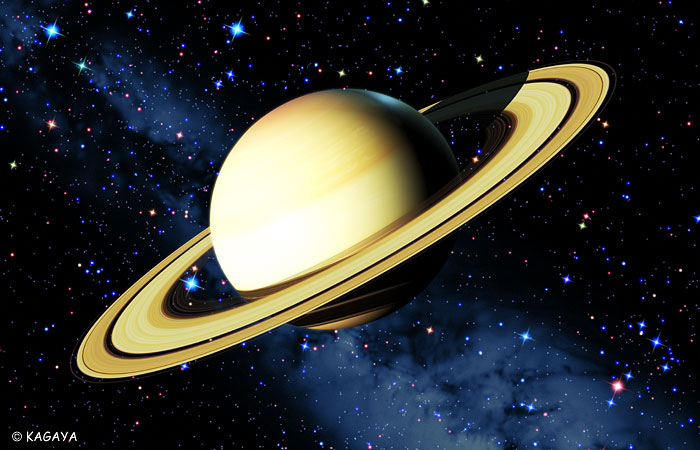
Saturn is the second largest planet in our solar system it's about 120,000 kilometers in size. Saturn is made up of around 97% of of hydrogen gas, about 3% of helium gas and around 0.05% methane gas. Saturn is one of the four gas giants in our solar system because it is mostly made up of gas. Saturn is the least dense planet because it is made out of hydrogen and helium gas which make the planet very light. Saturn is perfectly round it is sort of like a flattened ball, The distance from the centre of the planet to the poles is 54,000 kilometers and the distance from the equator to the centre is 60,300 kilometers. Saturn has also got seven rings surrounding it.
Saturn's Rings
Saturn's 7 rings are made up of particles of ice, dust and rock. The rings are 273,266 kilometers wide and are very thin. The rings are held in place by some of the many moons that orbit the planet. The gravity from the moons cause the gaps between the rings.
Saturn's moons
Saturn has about 60 moons including the second largest moon in our solar system Titan. Titan is slightly bigger then Mercury and is one of the three moons that have an atmosphere. Of the three Titan's atmosphere is the thickest.
Discoverer
Saturn was discovered by Galileo Galile in 1610 through his telescope. He originally thought that the rings surrounding the planet were two separate spheres. In 1659 Christiaan Huygens used a more powerful telescope then Galileo's and discovered that what Galileo thought were two separate spheres were actually 7 rings around the planet.
FACTS
- Saturn is 856 million miles from the Sun
- One year on Saturn is about 29.5 Earth years
- Saturn is the second largest planet in our solar system
- Saturn was named after the Roman God of agriculture. Saturday was also named after him
- Saturn was discovered by Galileo
- Saturn's largest moon is called Titan. titan is slightly larger then mercury and it is also the second largest moon.
- Saturn has about 60 moons and there are probably more to be discovered








